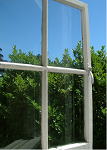My brief history: I went to a sleep doc a year ago, because I was fatigued and sleep apnea runs in my family. When filling out the Epworth test, I recall that I answered yes to questions about being tired but no to questions about falling asleep during the day. In fact, after looking over my answers, the sleep doc asked me if I wanted to "reconsider some of my answers", given that my answers might exclude me from insurance coverage for PSG and CPAP. I had a little feeling of uneasiness with the doctor for influencing me, but I did tweak my answers a tad, because I thought OSA was a strong possibility and I wanted the PSG to find out. After a PSG, he diagnosed me with moderate OSA and scheduled a CPAP titration. On the titration, the sleep tech told me that they had some trouble finding a pressure that got rid of the apneas. Nevertheless, the doctor settled on 13, which was the last pressure they tried (and not for very long). I've been using my S9 AutoSet faithfully for almost a year, sometimes on the prescribed CPAP pressure of 13, sometimes playing with APAP. Most of the time I used a Swift FX. For the last week or two, I've been using a borrowed Quattro FX, because I was noticing (with the help of others on this forum, documented in another thread) that my leak numbers were fairly high. Anyway, close to a year of CPAP and I don't think I could say that I feel much better. In fact, I recently visited a psychiatrist, because I was worried about problems that I was having with motivation, attention, and memory. The psychiatrist found some problems with the "delayed recall" aspect of my short-term memory and encouraged me to revisit the sleep apnea to see if it was being treated effectively.
I am trying to schedule an appointment with my original sleep doctor, but I am having problems simply getting him and his office to return my calls. I might just give up on him and try to go to Stanford or another doctor in my area that appears to care more (my friend has a doc that pored over the data on his SD card, whereas my doc never asked for the card). I am pretty frustrated by the lack of attention.
In the meantime, I am trying to do some self-diagnosis and try whatever I can do myself to get better quality sleep. After listening to Dr. Steven Park's recent teleseminar, I was intrigued by the concept of UARS, since I am fatigued but not sleepy and because I seem like I might have a somewhat CPAP-resistant problem. I started looking at flow and flow limitations in ResScan for the first time and I don't know quite what to make of it. I do see moments in the night where the flow limitation graph goes fairly high and often the flow graph looks flattened or jagged.
Here's a snippet of a recent night. I'm wondering if folks can comment on whether there's something bad enough that I should print this out and show it to whatever doctor I end up seeing:

To me it looks like at least 5 minutes of flow with pretty flattened peaks and very few events logged by the machine. Is this what UARS looks like?











